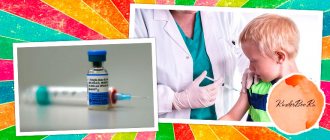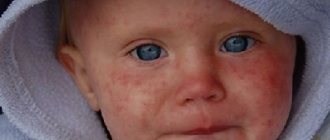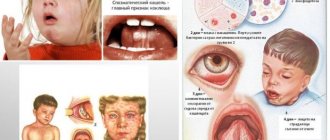“MMR 2” – vaccination against measles, mumps and rubella
Live vaccine (sterile lyophilized preparation, attenuated) for the prevention of measles, rubella, mumps
Manufacturer: Merck Sharp & Dohme Corp (USA)
Protects against viral diseases: measles, mumps and rubella.
Suitable for: children aged 12 months and older.
Included in the National Vaccination Calendar.
IMPORTANT: vaccinations with the MMP 2 vaccine are not carried out in clinics
Compatibility with other vaccines
The MMR-II vaccine should be administered one month before or after the administration of other live viral vaccines. Coadministration of measles, mumps, and rubella vaccine is not recommended with DPT or oral poliovirus vaccine.
Immunoglobulin should not be prescribed simultaneously with MMP-II.
If a tuberculin test (Mantoux test) is necessary, it should be done either before or simultaneously with vaccination with MMP-II.
X-ray room opening hours
Measles is an acute viral disease transmitted by airborne droplets (by talking, coughing and sneezing). It is characterized by high body temperature (39.0 degrees C and above), a general severe condition, cough, runny nose, inflammation of the mucous membrane of the eyes (conjunctivitis) and rash.
The measles virus easily spreads over long distances - into neighboring rooms, through corridors, through the ventilation system. 95-96% of children who were in contact with sick people become infected. In the first 3-6 days, the disease looks like an acute respiratory viral infection, but already during this period you can see rashes characteristic of measles on the mucous membrane of the cheeks in the form of white dots. Over time, unlike ARVI, the temperature rises again and a rash gradually appears on the skin (it covers the face, neck, upper and then lower body, including arms and legs), going down from top to bottom within 4- 7 days. The rashes also disappear gradually (within 3-4 days), leaving pigmentation at the sites where they appeared, which also goes away after a few days. Children under one year old rarely get measles, since they are protected by antibodies - protective proteins produced by the mother after she suffered an illness or vaccination. By 9-12 months. During the first year of life, maternal antibodies disappear from the baby’s blood, and he remains defenseless against this disease. If a small child falls ill, especially one weakened by previous diseases or having a congenital pathology, death is possible. Death is recorded in 1 out of 2000-3000 sick children under 3 years of age (in developing countries this figure is 3-10% of sick children). This disease is very severe in adults.
Measles is dangerous due to its complications: such as otitis (ear inflammation; observed in 1 out of 20 cases), pneumonia (in 1 out of 25 cases), blood damage (thrombocytopenia - a reduced number of platelets, which is dangerous for bleeding; observed in 1 out of 3000 cases) , convulsions that develop against the background of high body temperature (in 1 out of 200 cases), as well as inflammation of the brain, encephalitis; in 1 out of 1000 cases).
In addition, after measles, the person who has recovered from the disease temporarily develops a state of immunodeficiency (decreased protection against other infections), which contributes to the accumulation of severe bacterial infections.
Rubella is an acute viral infection transmitted by airborne droplets. In children, as a rule, it occurs mildly or in the form of a disease of moderate severity. People usually get sick 11-21 (rarely 23 days) after contact with a sick person. The first 1-5 days of the illness are characterized by a rise in temperature to 38 degrees C, malaise, headache, enlarged lymph nodes, especially on the back of the head, behind the ears, and sometimes conjunctivitis. A finely spotted rash appears on the skin, which is located mainly on the lateral surfaces of the torso and limbs, and lasts up to 5 days. In general, the duration of the disease is 1-2 weeks. Complications are very rare, but the development of encephalitis (inflammation of the brain) is possible in 1 in 1000 patients.
Rubella is most dangerous for pregnant women, because this virus is capable of infecting all tissues of the fetus. If a woman gets rubella in the first half of pregnancy, especially in the first 3 months, the result may be a miscarriage or a stillborn baby. It is also possible that a baby will be born with congenital rubella syndrome (CRS), which includes a triad of developmental defects: - congenital heart disease, blindness (cataracts) and deafness. In addition, SHS is characterized by brain damage, including mental retardation, as well as damage to the liver, spleen, platelets and other congenital disorders.
A woman can get over rubella unnoticed: if she feels normal, a minor rash appears for 1-2 days, which is sometimes ignored. And the virus, circulating in the blood of a pregnant woman, passes through the placenta to the fetus. Therefore, if a pregnant woman is suspected of being infected with rubella, it is necessary to conduct a special study (the blood is tested twice for the content of anti-rubella antibodies, and if their number increases significantly, which indicates a history of rubella, the question of terminating the pregnancy arises in the early stages, since there is a high risk of giving birth to a child with deformities).
11-30% of women of childbearing age are not protected from rubella.
If a girl or young woman has not had rubella and is not vaccinated, then before planning a pregnancy she herself needs to think about the appropriate vaccination. Vaccination protects almost 100%, immunity after a single vaccination lasts on average 15-20 years, then immunization can be repeated .
It must be remembered that after the administration of the rubella vaccine, it is not recommended to become pregnant for 3 months. If pregnancy occurred earlier than this period or a woman already expecting a child was vaccinated, this is not an indication for termination of pregnancy.
Mumps (“mumps”) is an acute viral infection transmitted by airborne droplets and affecting the parotid and submandibular salivary glands. They swell, causing the face to become rounded (hence the name “mumps”). This virus does not spread as widely in the environment as measles and rubella. If a sick child is isolated in a room, then children and adults who are not in direct contact with him do not become infected.
The disease begins with low fever and malaise, and after 1-3 days one or both salivary glands enlarge, making it painful to chew and swallow.
When examining the buccal mucosa, an inflamed papilla of the excretory duct of the salivary gland is visible on the affected side. In addition to the salivary glands, in approximately 4% of cases, the mumps virus can cause inflammation of the pancreas (pancreatitis), as well as the membranes of the brain (meningitis) in 1 out of 200-5000 cases, very rarely (1 in 10,000 cases) it is involved in the process brain tissue, then meningoencephalitis develops (inflammation of the membranes and substance of the brain).
Mumps is dangerous due to complications. In 20-30% of sick teenage boys and men, the testicles become inflamed (orchitis); in 5% of girls and women, the mumps virus affects the ovaries (oophoritis). Both of these processes can cause infertility. Possible fatalities 1:10,000 cases.
All three infections (measles, rubella, mumps) are caused by viruses and do not have specific antiviral therapy. That is, there are no drugs that would prevent the severe course of the disease and complications. Therefore, the main means of preventing these infections is immunization.
Susanna Kharit, pediatrician, head of the immunoprophylaxis department of the Research Institute of Children's Infections of the Ministry of Health of the Russian Federation, Doctor of Medical Sciences.
Contraindications
Only a doctor can decide whether the MMR-II vaccine is suitable for vaccination
"MMR-II" vaccine is contraindicated if there is a history of an allergic reaction to any component of the vaccine.
MMR-II vaccination is contraindicated in the following cases:
- Allergic reactions to vaccine components, including gelatin, neomycin.
- Acute infectious and non-infectious diseases, exacerbation of chronic diseases.
- Leukemia, lymphoma of any type, or other malignancies affecting the bone marrow or lymphatic system.
- Primary or acquired immunodeficiency conditions.
- Family history of congenital or hereditary immunodeficiency.
- Immunosuppressive therapy.
When using MMR-II, special caution should be exercised by persons with:
- history of traumatic brain injury,
- individual or family history of seizures, including fever,
- if you are allergic to eggs;
- with thrombocytopenia.
Vaccination should be delayed for 3 months or more after blood or plasma transfusion or immunoglobulin (human) administration.
Scarlet fever
Symptoms.
Scarlet fever begins acutely with a rise in temperature to 39-40.0 C and vomiting. Severe intoxication and headache are immediately noted. The most characteristic symptom of scarlet fever is sore throat. Patients report acute pain when swallowing. There may be a whitish coating on the tongue and tonsils. The tongue subsequently acquires a characteristic appearance - “raspberry tongue” (bright pink, coarse-grained). On day 2 a rash appears. Its distinctive feature is that the bright red, pinpoint rash is located on a red background, which creates the impression of a general confluent redness. When you press on the skin, a white spot remains. The rash can be located all over the body, but the area between the upper lip and nose and chin always remains clean. The rash lasts from 2 to 5 days. Symptoms of sore throat remain somewhat longer (from 7 to 9 days).
Scarlet fever is the only “childhood infection” caused not by a virus, but by bacteria (group A streptococcus).
This acute disease is transmitted by airborne droplets, and infection through household items (toys, dishes) is also possible. Children of early and preschool age are sick. Patients are most at risk for infection in the first 2-3 days of the disease. Only children suffer from scarlet fever, since adults are already resistant to streptococcus. Those who have recovered also acquire lasting immunity. Immunity after childhood infections is developed almost throughout life, and having been ill once, a person is unlikely to get sick again. Vaccines protect against measles, rubella, mumps, and chickenpox, although even after vaccination, about 3% of children may get sick (this is due to the individual characteristics of the immune system). By following the National Vaccination Calendar, you can protect your baby from most “childhood infections”!
Possible side effects
The following adverse reactions have been reported with the administration of the MMR-II vaccine without regard to cause and effect: fever, headache, dizziness, rash, injection site reactions, febrile seizures, anaphylaxis and anaphylactoid reactions, arthritis and thrombocytopenia. Additional adverse reactions that have been reported without regard to causation include encephalitis and encephalopathy in their varied clinical manifestations.
Come get vaccinated at VIRILIS. A full range of vaccines for children and adults, family vaccinations - at a special price!
Parotitis
People also call it “pig”. This childhood viral infection is characterized by acute inflammation in the salivary glands. Infection occurs by airborne droplets. “Mumps” begins with an increase in body temperature to 39C, severe pain in the ear area or under it, aggravated by swallowing or chewing. At the same time, salivation increases. Swelling in the upper neck and cheek area increases quite quickly; touching these places causes severe pain in the child. This disease itself is not dangerous; unpleasant symptoms disappear within 3-4 days. However, quite often mumps ends in inflammation in glandular organs such as the pancreas and gonads. Pancreatitis in some cases leads to diabetes mellitus. Inflammation of the gonads (orchitis) is more common in boys. This significantly complicates the course of the disease, and in some cases can result in infertility. In particularly severe cases, mumps can be complicated by viral meningitis, which is severe but not fatal. Given such a number of possible complications, vaccination against mumps has been included in the national calendar.
MMRII VACCINATION SCHEME
Vaccination against measles, rubella and mumps is carried out twice during life.
First vaccination
done at the age of 12 months. 93% of vaccinated people have lasting immunity.
The second vaccination is carried out
at 6 years old. We recommend re-vaccination from the age of 4 due to the currently unfavorable epidemiological situation in the world. International medicine does not object to this.
If the child is under 4 years old, MMRII is also allowed. The main condition: 1 month must pass after the first vaccination. When carrying out double vaccination, the effectiveness is 97%.
When the timing of vaccination is violated, the first vaccination can be given to a child at any age, the second vaccination - no earlier than 1 month after the first.
Doctors in this field
Body reaction
Side effects after the vaccination in question are a normal reaction of the body, this indicates that the human immune system is actively working.
There is no need for treatment, and within a week all unwanted symptoms will disappear.
Undesirable consequences have nothing to do with the vaccine if they appear earlier or later than a week or two after vaccination.
At different ages, the body’s reaction may differ, since all body systems are improved and with revaccination the reaction changes. At the age of one year, the reaction may resemble ARVI with the following symptoms:
- heat;
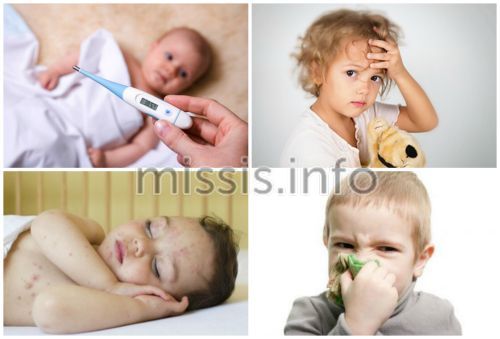
- a rash, urticaria appears;
- the throat becomes inflamed, a runny nose soon appears;
- appetite decreases and sleep is disturbed;
- diarrhea and loose stools;
- headache appears.
Local reactions also occur - the injection area swells and turns red. At the age of 6 years, the negative symptoms are the same, but the allergy manifests itself not only at the injection site, but throughout the body. Bacterial complications include otitis media, sore throat, bronchitis - these are the manifestations that arise due to non-compliance with recommendations and restrictions before vaccination or incorrect actions after, in particular, you cannot swim (you can wash in a warm shower, but not for long).
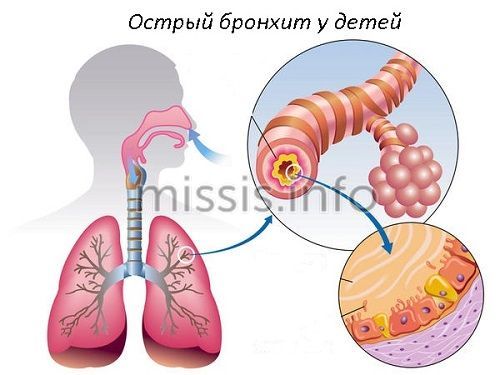
Precautions and rules of behavior after vaccination
Children's doctor Komarovsky notes that the likelihood of infection from a person vaccinated with a live drug is minimal. To prevent a vaccinated child from getting measles, mumps or rubella infection, and not causing these pathologies to develop in other people, he should take precautions. People with weakened immune systems are also advised to know the specifics of prevention.
After vaccination, vaccinated children are shown:
- do not walk outside for a while in crowded places;
- do not swim until the puncture heals and body temperature normalizes;
- do not undergo treatment with drugs that suppress the immune system (antibiotics, immunosuppressants).
For unvaccinated persons, doctors give the following recommendations to prevent infection from a recently vaccinated person:
- limit contact with immunized persons;
- get vaccinated against viral pathologies;
- start taking vitamins and immunostimulating drugs.

